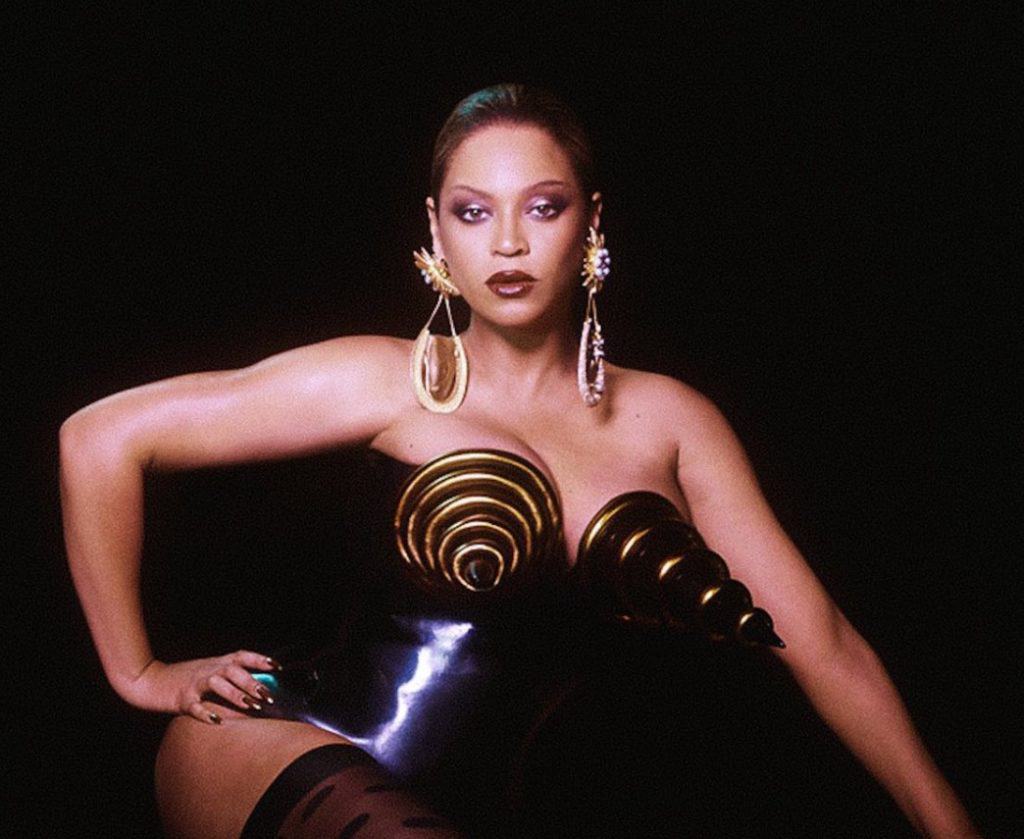A Follow-up to Lemonade, Beyonce released Renaissance after six years.
Our Rating: 8.9/10
Beyoncé’s Renaissance was undoubtedly one of the year’s most eagerly anticipated albums. And every time Queen Bey releases a new album, it’s a big landmark that serves as a moment of pop cultural togetherness in a fragmented society.
The last official Beyoncé solo album was released six years ago. Following her striking visual album Lemonade in 2016, the pop titan released The Gift in 2019, the vivid music for Disney’s The Lion King remake, and a decent but obnoxiously unmemorable full-length with her husband Jay-Z (as the Carters). But the solo album Beyonce is refreshing and always exploring new topics.
Her seventh studio album, “Renaissance,” is the voice of a musician who has been rejuvenated. It’s indeed her finest persistently sparkling and delightful disc yet, and it boasts 16 mesmerizing songs on which she explores romance, friends, and relationships. Together in a message included with the album, she claims that the 3 years it took to create the record while under lockdowns “allowed me to feel free and adventurous”, providing a space where she could “scream, release and feel the freedom. It allowed me to feel free and adventurous in a time when little else was moving. My intention was to create a safe place, a place without judgment. A place to be free of perfectionism and overthinking. A place to scream, release, feel freedom. It was a beautiful journey of exploration.”
The album’s “Act 1” subtitled highlights are presented here, and there are two more to come. Because Beyoncé’s new performance is ready to go, as her fans are knows.
View this post on Instagram
Here is our review of some of the highlights of the album as the overall album is one of a kind.
Although not very innovative, the lead hit, Break My Soul, was a wild and ecstatic example of 90s diva house. Nevertheless, it did a good job because it was her first US Top 10 song in six years and her comeback to US radio playing. Given its anti-capitalist lyrics pushing people to leave the 9 to 5 job, critics have labeled Break My Soul the hymn of the Great Resignation, the current phenomenon of US professionals resigning their employment en masse. The hook sample from Big Freedia establishes the album’s empowering mood.
One “Alien Superstar,” by Bey, makes it quite obvious that she exists on a completely different plane from our earth. She broadens her motivation and makes use of dance style on “Alien Superstar.” The song, whose contributors include Labrinth, Lucky Daye, 070 Shake, and Jay-Z, combines a pounding beat with a subtle, upscale emphasized lyricism that is characteristic of a ballroom Rapper. This even catches up with a high register, making it the album’s most opulent and captivating track.
The focus is self-satisfaction. Cuff with her reckless, self-effacing urge to “screw stuff up,” it undercuts a typically sweet Nile Rodgers guitar riff. Beyoncé “is feeling it” on this rootsy song, she adds. Beyoncé’s plans for her leisure activities are juicier. Trombone experiments, co-writer Nile Rodgers’ recognizable riff sound, and Sheila E.’s percussion combine to create a throbbing head-nodder. Energy begins with the same kind of funky bass as the song Cuff It before turning into a nighttime worldwide disco sensuality. A hot jam that combines Jamaican rapper Beam and the controversial song “Get Along With You” by Kelis from 1999.
On “Church Girl,” which borrows Cameron Paul’s “Brown Beats,” a track crucial to the invention of roll music, the ode to that album’s distinctive character is strongly audible. Church Girl transitions from opulent gospel to rap, and Pure/brazen Honey’s self-assurance abruptly gives way to light pop backing vocals.
A sensual slow groove with vocals in a rich, textured orchestration, “Plastic Off the Sofa” feels like a blissed-out reworking of “Rocket” from 2013’s “Beyonce.”
This lovely collection of sentimental nostalgia highlights Beyoncé’s incredible voice and slows the pace with hazy guitar riffs and a heavenly backup soprano. It’s a straightforward love track in which Beyoncé plays the pretty girl. She laughs and sings, “I think you’re so cool, even though I’m cooler than you,” she sings with a wink and a laugh.
“Virgo’s Groove” makes it sound like a sensuous follow-up to “Gift from Virgo,” which debuted on Beyoncé’s 2003 solo debut, “Dangerously in Love.” With its bouncy beat and Beyoncé’s professions of adoration that wander into the sexual zone, the record’s longest track is a perfect accompaniment to “Plastic Off the Sofa” – providing the record is enjoyed in the manner it was supposed. Beyoncé is a Virgo if you weren’t aware.
A split-personality song, Pure/Honey starts off with a flinging synth-bass and Beyoncé instructing “dirty to the left, cash to the right” before joking in a knowing tone, “It should cost a billion to look this good.” Along its periphery, Madonna’s “MDNA” phase may be seen in hints. The song’s next, less explicit portion turns into pop with a flouncing tune that as careless as a wheel at a skate park. On the album, the song with the most fascinating title has been produced by The Dream, a co-write by Jay-Z, and a fidgety hi-hat driving the composition. In the song “America Has a Problem,” Beyoncé breaks into a smooth rap wedged between such a lovely chorus.
“You can get no higher than this…love don’t get no higher than this.” Beyoncé ends her extensive work on the Summer Renaissance with a tribute to Donna Summer while a sample of “I Feel Love” plays in the backdrop. She subtly hints,”Know you love when I roleplay, who am I now?/I’m a doc, I’m a nurse, I’m a teacher/Dominate is the best way to beat ya.”
To contrast the song’s pop tendencies and its loping rhythm. a suitable climax to an album filled with ambitions & gives the album a sensual ending.In order to join the most recent trend of Black artists resurrecting cosmopolitan forms that they were previously forced out of, Be relies on dance music, notably New Orleans bounce, since the search of Black joy is essential to the album. Influential Black people including Barbara Ann Teer, who founded Harlem’s National Black Theatre, as well as rapper Big Freedia and producer Honey Dijon, are samples and collaborators on the song “Renaissance.”
We have to hand it to Beyoncé for revamping herself yet again, even though the second half of “Renaissance” has a couple tunes that appear a little bland. Think “Single Ladies,” “Irreplaceable,” or “Crazy in Love” when listening to this album; such songs aren’t intended to be No. 1 singles. Moreover, she is a unique pop diva whose music has evolved throughout the course of her career. Even though Beyoncé has nothing to prove to anybody after 25 years, the beginning of her “three act project” shows that she remains willing to challenge herself and explore innovative sounds, genres, and ideologies. With “Renaissance,” she has contributed another outstanding composition to her discography, one that will help her lead the battle to restore Black culture to the foreground of the party and ballroom scenes. She ensures that a lot of love is put into the resuscitation of Black classics, which is exactly what “Renaissance” accomplishes.








